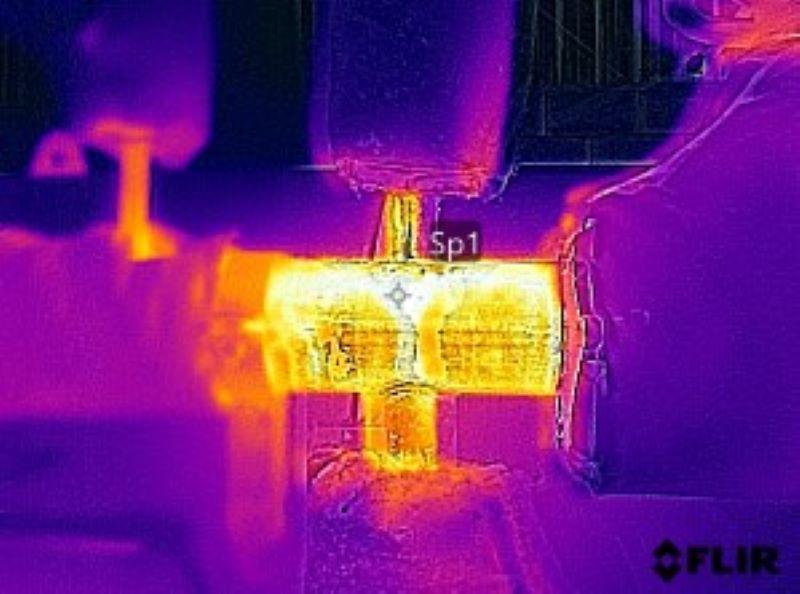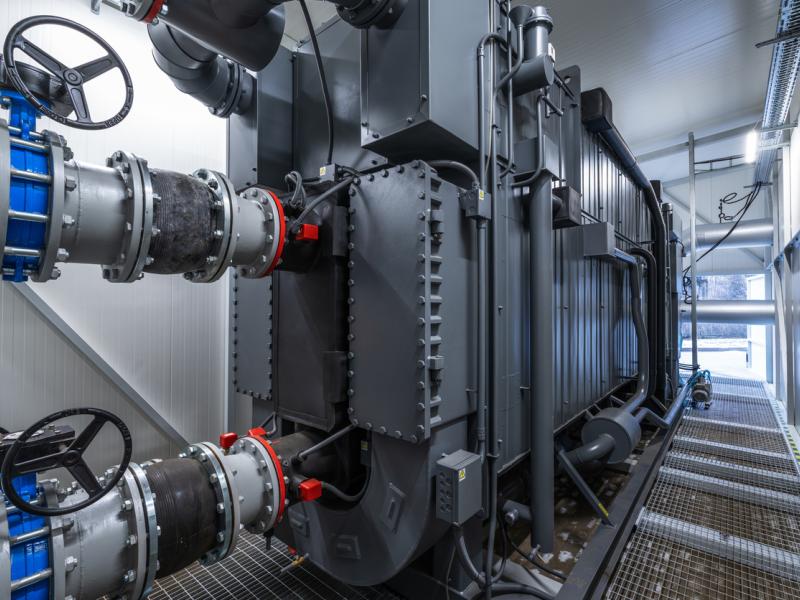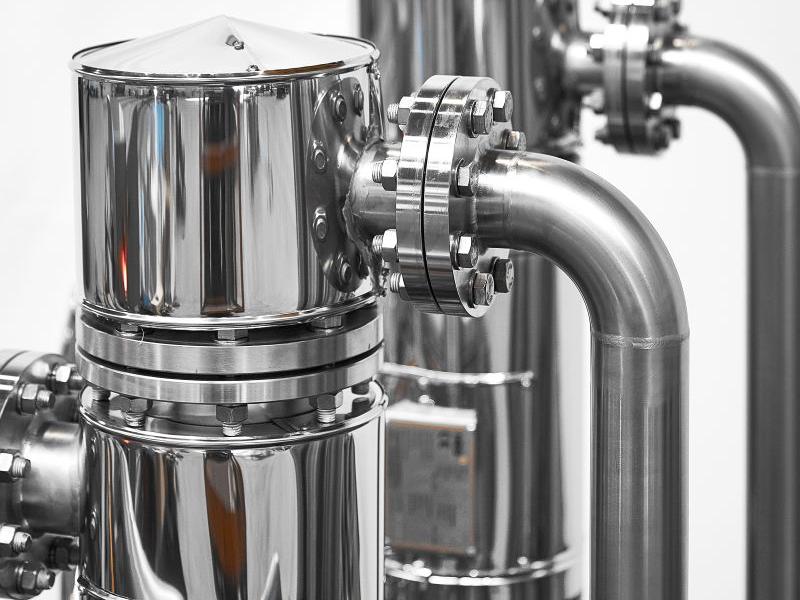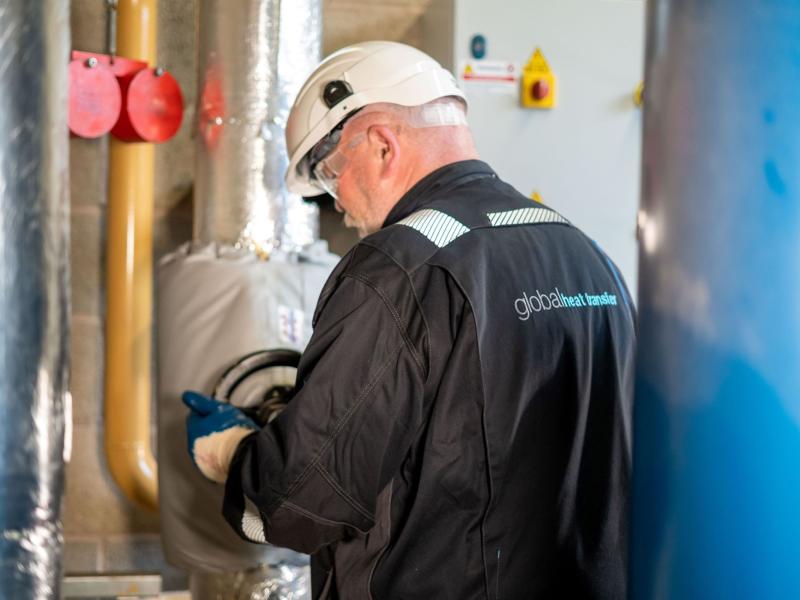Just like a doctor can use investigative equipment, such as X-rays, to identify a broken limb, maintenance engineers have a range of tools at their disposal to manage thermal oil. Here Tim Powell, remote condition monitoring expert at thermal fluid specialist Global Heat Transfer, explores the benefit of one of these tools — thermal imaging.
It can be difficult for a doctor to diagnose the cause of a patient’s pain by simply looking at them. Similarly, once thermal fluid enters a heat transfer system it is no longer visible, so monitoring its condition can be difficult.
Thermal fluids are essential in indirect heating applications and are designed to operate efficiently at high temperatures over long periods of time. With proper maintenance, these fluids can help manufacturers deliver high-quality products at scale. While it's important to note that long-term exposure to high temperatures — especially in the presence of oxygen — can cause thermal fluids to degrade, this can be avoided with proper care and maintenance. By keeping the thermal fluid in good condition, manufacturers can ensure that their system remains in optimal condition, reducing the risk of carbon build-up and other issues that could impact the efficiency or safety of their operations.
Take this example, a pharmaceutical facility is unaware of degraded oil and contaminants in the system and has noticed the process is not getting the required heat. While turning up the temperature of the system could resolve the issue, this is a short-term fix that could accelerate fluid degradation and will increase energy costs.
Reactive vs proactive maintenance
Some manufacturers, such as the pharmaceutical facility in the previous example, choose to follow a reactive maintenance strategy. If manufacturers wait until a machine breaks down before intervening, it can lead to loss of production, increased energy costs and materials or ingredients that could have been saved earlier.
In addition to any wastage, engineers must shut the entire system down and wait for it to cool before carrying out repairs. Prevention is better than cure, so proactive maintenance is often a more successful approach when working with thermal fluids.
By taking a proactive approach to maintenance, engineers can better understand fluid and system condition and react to issues before they impact production. Just like how a blood test taken by a doctor helps identify a health problem, regular thermal fluid sampling helps engineers identify a range of potential issues with the heat transfer system before they become significant. Samples must be taken while the fluid is hot and circulating to be representative, so there’s no need to pause production.
An investigative tool
By regularly walking the system, engineers can monitor gauges and pipes to see if maintenance is required. However, it is not always easy to see internal issues. Using thermal imaging cameras during checks enables engineers to quickly identify potential problems and prevent them from occurring.
The tool uses infra-red radiation to produce a real-time temperature display of the targeted area. The thermographic display will indicate areas of high and low levels of heat — cooler parts of the system show as purple or blue, whereas hotter parts show as oranges, yellows and whites.
For instance, viewing the expansion tank using a thermal camera can reveal the level of thermal fluid in the tank and tank temperature. This allows monitoring of the tank without relying on a single level switch or sensors and is a good backup.
When working in dark or hard to reach areas, engineers can use thermal imaging to detect hotspots that may indicate fluid leaks from seals behind thermal insulation, or cold spots that often indicates carbon build-up. Without the aid of thermal imaging, such issues may go unnoticed until they become significant, making this technology invaluable in ensuring timely maintenance and preventing costly repairs. In potentially explosive environments, an ATEX/UKEX compliant camera must be used.
If engineers know there is an issue but are unsure of the cause, thermal imaging cameras can help find it quickly and effectively. For example, a bakery notices it must throw out a batch of unevenly cooked loaves, suggesting there’s a problem with its system. Using thermal imaging enables engineers to quickly investigate the oven where a hot or cold area is causing an issue.
A hotspot on a heater, for example, might indicate an issue with the internal refractory or insulation — if addressed promptly this early warning sign could prevent the costly repairs and loss of production caused if the refractory were to fail. In addition, thermal imaging can highlight heat loss from valves and damaged insulation, which will help reduce energy consumption, carbon footprint and costs.
While thermal imaging is a cost-effective way for facilities to highlight issues before they become serious, it may be difficult to determine what to do with the findings. A specialist engineer can carry out an investigation, giving detailed findings and recommendations to improve system efficiency and increase uptime. This service can form part of existing preventative maintenance plans, such as Thermocare®, as well as part of specialist audits.
Just as X-rays made visible to doctors what was previously invisible, thermal imaging offers engineers another lens through which they can see their systems in a whole new (infra-red) light. By including this investigative tool in their preventative maintenance procedures, engineers can gain a better understanding of their system and fluid, increase uptime, and reduce costs.
For more information on building thermal imaging into your management of heat transfer systems, visit Global Heat Transfer’s website.
Editor’s note: If you want to ensure you keep up to date with press material, opinion focussed blog content and case studies from Global Heat Transfer, you can subscribe to receive the company’s Blog posts by e-mail here https://www.globalhtf.com/about/media/ght-news/
For further information contact: Ben Deakin,
Global Heat Transfer Ltd, The Global Group of Companies,
Cold Meece Estate, Cold Meece, Stone,
Staffordshire, ST15 0SP
Telephone: +44 (0) 1785 760555
LinkedIn: https://www.linkedin.com/company/heattransferfluid/
e-mail: bdeakin@globalgroup.org
Twitter: https://twitter.com/G_HeatTransfer
Press enquiries: Alison Gardner or Barney Hallawell- Stone Junction Ltd
Suites 1&2 The Malthouse, Water Street, Stafford, Staffordshire, ST16 2AG
Telephone: +44 (0) 1785 225416
e-mail: alison@stonejunction.co.uk or Barney@stonejunction.co.uk
Blog: www.stone-junction.blogspot.com
Twitter: https://twitter.com/StoneJunctionPR
Facebook: http://www.facebook.com/technicalPR
LinkedIn: https://www.linkedin.com/company/stone-junction-ltd
About Global Heat Transfer: Global Heat Transfer is a thermal fluid specialist, providing heat transfer engineering assistance and thermal fluid supplies. Services offered include sampling and analysis, 24 hour delivery of premium quality thermal fluids, system drain down / cleaning / waste management, planned maintenance programs and a broad portfolio of affiliated system design and installation services. It is part of the Global Group of companies.
Ref: GHT407/03/23






